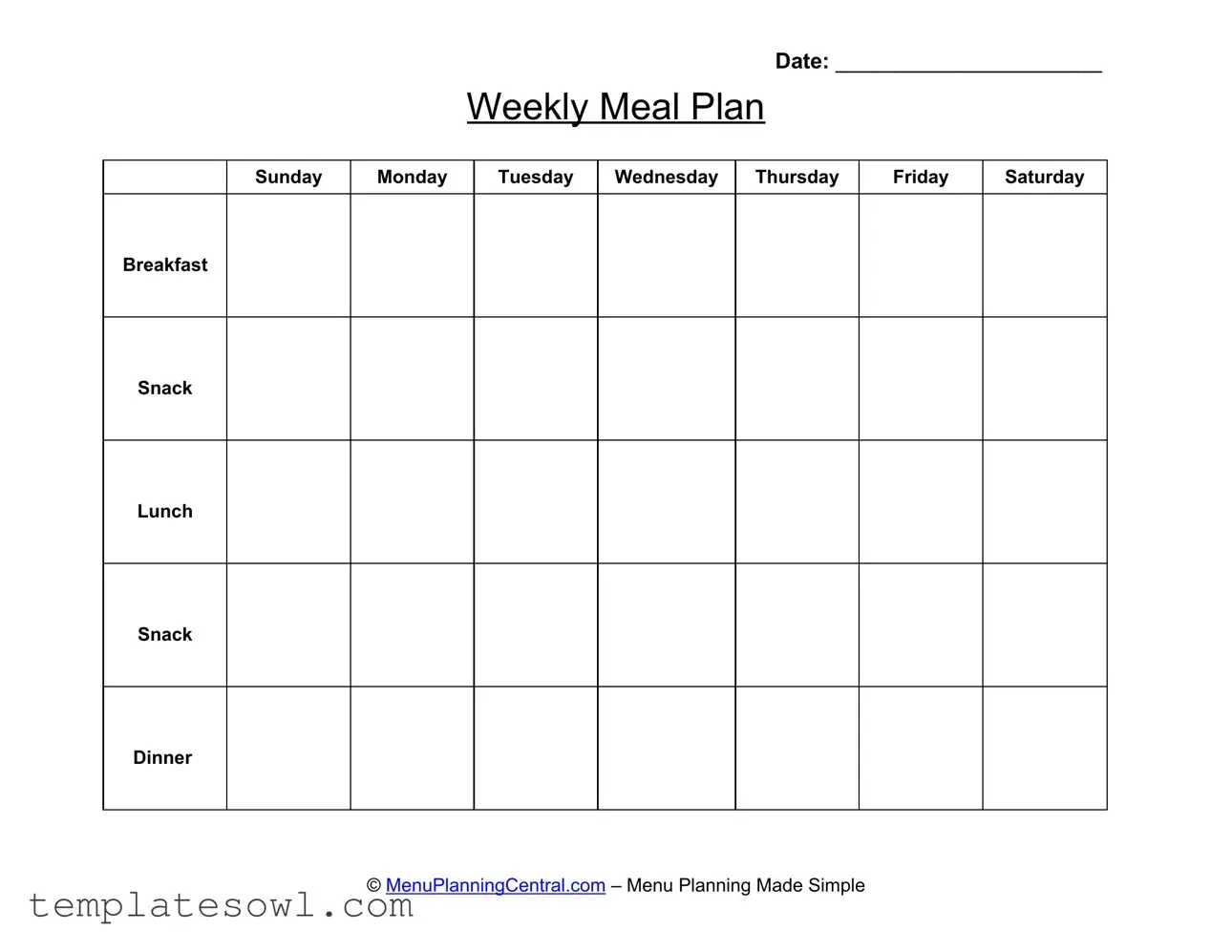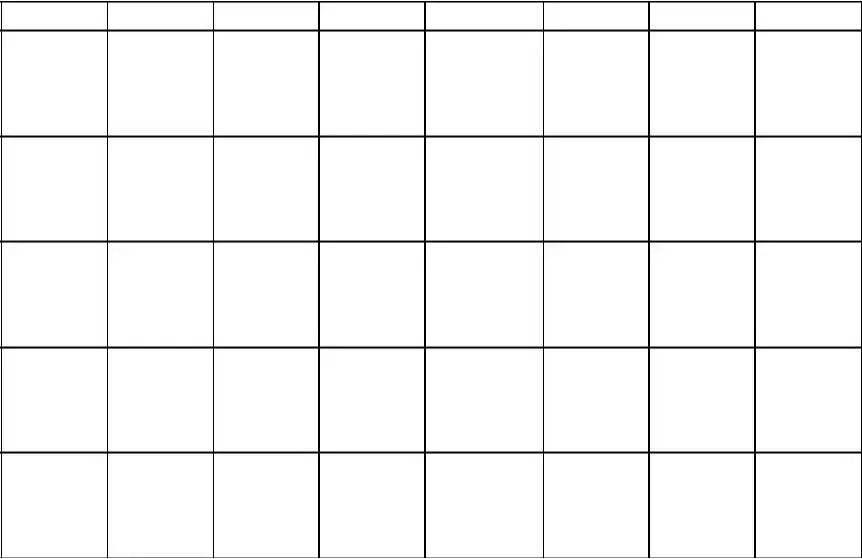Filling out the Menu Planner form can be a straightforward process, but many individuals stumble into common pitfalls that can hinder its effectiveness. One major mistake occurs when people fail to include the date on the form. This simple omission can lead to confusion about when the meal plan applies, making it difficult to organize grocery shopping and meal prep accordingly.
Another frequent error involves neglecting to specify meals for each day of the week. By not filling in the breakfast, lunch, and dinner sections, individuals miss the opportunity to create a balanced diet. Planning meals ahead of time not only saves money but also promotes healthier eating habits.
Some users forget to factor in snacks, which can result in poor choices throughout the day. Neglecting to plan for snacks may lead individuals to reach for unhealthy options or skip them entirely, derailing their overall nutrition goals. Including well-considered snacks can provide necessary energy and stave off hunger.
Additionally, the reliance on repetitive meals throughout the week stands as a common mistake. Consistently eating the same meals can lead to boredom, making it less likely for individuals to stick to their plans. A varied selection of meals can keep individuals engaged and excited about their food choices.
Moreover, many people underestimate the importance of aligning their meal plans with dietary restrictions or preferences. Ignoring allergies, intolerances, or specific nutritional goals can pose health risks and discourage adherence to the plan. Awareness of personal dietary needs ensures a better fit between the menu and individual health outcomes.
Another error involves not considering preparation time for each meal. A plan that lacks this consideration may lead to frustration, especially on busy weekdays. Users should account for how long meals will take to prepare based on their schedules to maintain a realistic and manageable plan.
The lack of a shopping list often hampers the success of the meal plan. Many individuals fill out their Menu Planner without creating an accompanying grocery list, which can result in forgotten staples and wasted time at the store. Creating a detailed shopping list directly from the meal plan can streamline grocery shopping and reduce stress.
There’s a tendency for people to overlook leftovers. Not utilizing leftovers can lead to waste and unnecessary cooking. Planning meals where leftovers can creatively turn into the next day’s lunch or dinner can save time and promote sustainability.
Finally, failing to allocate time for adjustments is a significant oversight. Life is unpredictable, and an evening may go awry or tastes may change. It’s crucial to leave room for modifications in the plan to accommodate unforeseen events or new cravings, ensuring a practical and enjoyable meal planning experience.

